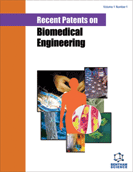Abstract
Bone volume available for dental implant placement in the posterior maxilla is frequently reduced by maxillary sinus expansion and resorption of the alveolar ridge following tooth loss. Internal bone augmentation of the sinus floor is routinely performed by elevation of the maxillary sinus membrane via a lateral or transcrestal approach. The key issue in minimally invasive transcrestal techniques is the avoidance of membrane perforation in the course of osteotomy and membrane elevation. Novel devices to reduce the risk of membrane perforation have been recently developed and protected by patents. The present review presents recent sinus membrane elevation techniques (balloon-mediated elevation, hydraulic injection, gel-pressure technique) as well as new approaches to prevent sinus membrane perforation during transcrestal osteotomy (lasers, piezoelectric devices, auto-stop drills). The overview of patented designs is supplemented by an outlook on future surgical techniques and technical possibilities in transcrestal sinus floor augmentation surgery.
Keywords: Autologous bone graft, atrophic jaw, balloon catheter, dental implants, surgical complication, maxillary sinus, schneiderian membrane, sinus floor elevation.
 9
9

